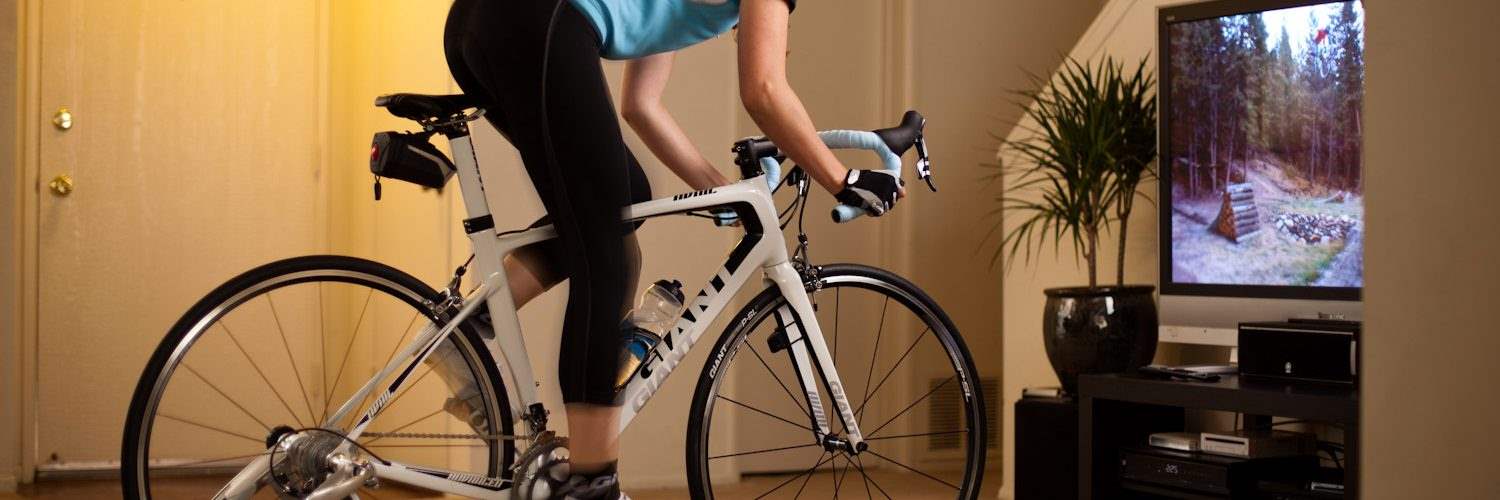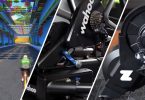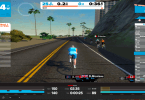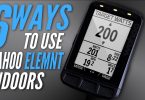Every serious cyclist knows that sometimes, no matter how much you need to get out there, the weather can make it just impossible to go for a ride outdoors.
A little bit of rain and wind is one thing, but a foot of snow and below freezing conditions, a typical winter for some people, is something else entirely.
That’s why for those of us who consider cycling more than just a hobby, picking up an indoor bike trainer is an essential part of our training. While there isn’t a model out there that can completely match the challenge, variability, and freedom of an open road, there are undoubtedly a few ways you can ensure your indoor cycling will help boost your abilities as a cyclist.
And one of the most important ways is by using a smart bike trainer.
Classic Bike Trainers vs. Smart Bike Trainers: What’s the Difference?
If you’ve been around in the cycling world for a while, you may have been using the same classic trainer for years.
These trainers, also known as turbo trainers, let you ride your bike while remaining stationary. Besides a bike, it’s the most necessary piece of equipment for cycling indoors as without it, you’d have to make do with going in tiny circles in your garage.
Classic trainers draw their resistance from fan-based, magnetic, or fluid-based resistance and provide you with no metrics and have no method of communicating with an outside computer, such as your bike computer for example.
Even though there are ways to make your classic trainer into a semi-smart trainer by utilizing Virtual Power, classic trainers still lack the interactivity and consistency you get from a smart trainer.
And while these simple trainers can be quite effective at keeping you in shape during the long, cold months of winter, it can make indoor cycling a mind numbing experience.
Train Smarter with the Comprehensive Data of Smart Trainers
A smart trainer offers the same essential design ELEMNTs of a basic trainer with the added benefits of giving you access to certain metrics of your workout, such as power, speed, and cadence. It can pair with a bike computer, a personal computer, or a tablet and you can see that information right in front of you while you are training. Also, many smart trainers can be interactive and controlled by a cycling software or an app such as Zwift, Trainer Road, CycleOps VirtualTraining, Bkool, The Sufferfest, etc.
The actual benefit of all this data comes from being able to chart your progress, a feature that many apps already contain. That means you can create a thought-out training plan that lets you measure improvements, analyze obstacles, and improve your cycling abilities in a calculated, intelligent way.
What to Look for in a Smart Trainer
The best smart bike trainers add a whole new level of interaction to your indoor workout. But as they’re a bit pricier than traditional trainers, it’s important to make the choice based on what’s right for you.
That’s why we’ve included a few things to look for when it comes to purchasing a smart trainer.
- Compatibility – If you have a certain app or software you want to use for your training, make sure that your software supports the type of trainer you want to buy. The most popular software usually support a wide range of smart trainers and even classic trainer by utilizing Virtual Power.
- Direct drive or wheel-on trainer – A direct drive requires you to attach your chain directly to the resistor by removing your back wheel while a wheel-on drive uses a kinetic roller to measure your progress. Direct drive is more expensive, but it won’t wear down your tire.
Also, you might want to consider cassette compatibility if you want to use more than one bike on the direct drive trainer. For example, if you have a 10-speed bike and an 11-speed bike and you intend to use both of them, then with a direct drive trainer, you need to change the cassette every time you switch out bikes and that can be a hassle for some. - ANT+, ANT+ FE-C or Bluetooth connectivity – This goes into the compatibility issue we discussed above. Make sure the smart trainer can communicate with the software you intend to use. Most modern models allow dual band communication, meaning both ANT+ and Smart Bluetooth but some only have ANT+ or Bluetooth only and might not be open to communicate with all training software out there.
- ·Budget – A good smart trainers can range from $400 to $1,600. The difference between a $400 trainer and $1,000+ trainer usually noise level, real road feel, resistance level, and power accuracy. If you plan on using it on a regular basis, a good trainer is worth the money in my opinion. Take a look at our Top Picks to see which smart indoor bike trainer we recommend and also check out our price tracker for the best deals.
So if you’re in the market for a smart trainer, make sure you do your homework and read plenty of indoor bike trainer reviews like we have on this site. It sure can save you some trouble down the line. But more than anything, get ready to train smarter and suffer!








